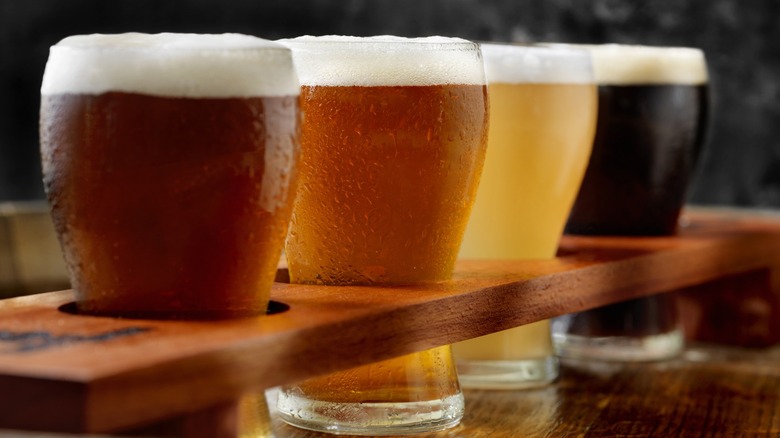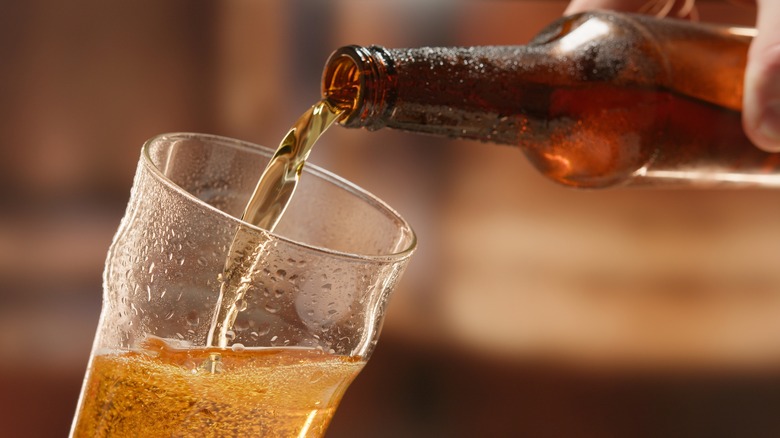The One Thing You Should Never Do When Pouring A Homebrewed Beer
Whether you're eager to sample your own homebrewed beer or have been tasked with handing out pints made at a friend's home, the speed of your pour matters as you begin to tip beer into glasses. Don't pour it all at once. Slow and steady wins the race, as homebrewed beer can contain sediment from the brewing process, and a slower pour should keep those yeasty floaters out of your pint glasses.
Depending on the color of the beer bottle, you may see a settled layer along the inside of the glass. Don't worry, these particles are normal. This visible sediment is mostly yeast and protein resulting from either bottle conditioning — the addition of ingredients to bottles of homebrew before sealing – or the specific kind of beer. Aged, dry-hopped, and cloudy beers often present a murkier appearance when homebrewed.
A couple more tips will also help you avoid getting the sediment into your glass. First, storing bottles upright helps sediment settle to the bottom of a bottle. Second, before you pour and sip, check to make sure the bottle is cold to the touch. If not, pop it into the fridge for an hour or two in an upright position. Once the brew has been properly chilled, pour your beverage slowly into your glass to keep any remnants inside of the original bottle. When poured slowly, the curve of a tall beer bottle traps the sediment inside, and it should settle along the ridge inside of the bottle.
Pouring pints like a pro
Not only will the speed of your pour help keep the sediment inside the bottle, but the angle at which you hold both the bottle and your glass can keep chunky residue out of your clean-looking pint. The goal is to hold the glass at around a 45-degree angle as you pour the beer along the side of the glass — not smack into the center of the pint. With a slow pour speed, you'll have more control and can pull back should you notice pieces flowing into your glass, and you can be on your way to sipping a clear beer that has all the taste and none of the particles leftover from the brewing process.
Should excitement get the better of you and you end up dumping those pieces into your pint glass, the flavor of your beer might change, and you'll have a less pleasant drinking experience on your hands. If after taking a sip of the floater-enhanced homebrew you happen to notice the taste isn't quite right, this may indicate a bad batch, and you'll want to dump it out and reach for another bottle to pour.

